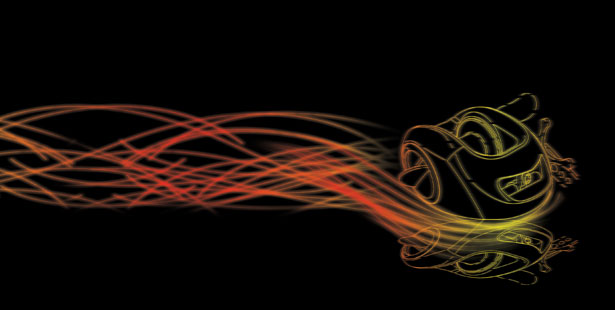
What is meant by the term “Power Fishing”? It is becoming a “buzz” word and is a fishing technique that is being used, if not openly talked about, by a lot of tournament anglers. In a world of high-speed technology computers, ADSL wireless Internet and so on, patience is quickly becoming almost a forgotten commodity. We anglers are no different. We want to catch fish, bigger and faster. Demanding the best electronics, bigger outboards, faster boats, the finest tackle and the newest baits.
After all I have said, still confused? - you well could be! Power fishing cannot be summed up in one sentence. Power fishing is normally seen or associated with running the bank, keeping the sneaker on high and casting jigs, spinnerbaits, crankbaits and jerkbaits as fast as they can be thrown. This routine does sometimes produce more fish than normal but we bass anglers, be it social or competitive, must consider that bass can be very finicky and should recognize that sometimes we must step off the merry-go-round and take a more deliberate approach to power fishing. A classic example was a recent afternoon’s fishing at local dam I know very well.
The wind was up, causing good wave action, and moving the water around on the windy side of the dam. The spawn and post-spawn times were over and the bass had settled into a summer pattern. Having only a few hours left in the day to fish, this was a good time to run the banks, power fishing using a 3/8” white and chartreuse spinnerbait. After making repeated casts down a 30 meter reed bank with small secondary points without any success, I anchored the boat and started fishing a Super Fluke on a split shot rig, and casting to the same secondary points I immediately hooked three good fish. Even with the wind creating a large bow in my line, the fish were so aggressive that the bites were easily seen as each time the line straightened as the fish swam off with the finesse rig. The point being to be flexible when patterning out the fish. Bass don’t read our expert opinion, but are subject to their own environment and habitat, controlled by weather, atmospheric pressure, moon phases, water temperature and colour, ph and so the list goes on.
Points to consider when power fishing
The essence of power fishing is the ability to present baits quietly and efficiently into heavy cover, structure (log, stumps) junctions (where two or more different structures meet) grass or reed points or any prominent area bass would be positioned.
Don’t confuse power fishing with speed fishing. Just because you are throwing a spinnerbait, crankbait or jig, doesn’t mean you need to move fast and run and gun. Sometimes slower is better.
All things being practical use a technique that you have the most confidence in.
Develop a routine and stick with it. Present your baits with the best opportunity to trigger strikes. At times you might have to present 2 or 3 different lures at the same target from different angles.
Fish the moment. Find out what fish want now (what pattern and bait to use) and then capitalize on that knowledge. Don’t get caught up worrying about why the 3kg you saw yesterday isn’t there, or why they are not biting on baits you used previously. “Get over it” as my partner Ian always says. Just make the adjustment to current conditions and move on to the next spot or pattern.
Adapt to water and weather conditions. There are times when bass want smaller baits or slower presentations. Choose the appropriate lure colour when faced with a different water colour. Find out how the fish are positioned. Instead of moving quickly through an area, try pitching to the opposite side of the same structure, for example to go from the shady to the sunny side looking for a bite.
Learn every cast with both hands. Different structures present themselves during a day’s fishing. In fact, different situations pop up on any given stretch of bank. There are times for a longer pitch or an uptight flip, or times for an over hand roll or a pitch, skip cast. Learn all of the casting techniques using left or right hand, and you’ll become a better fisherman, ready for any situation that presents itself.
When to do what
Flipping – best for stained to muddy water or extremely heavy cover. This is a short line technique. It’s quieter and more accurate than any other of the cast, but cannot achieve the distance sometimes needed.
Pitching – best suited for clearer situations. Can achieve the same quiet precise entry with a lot more distance. Better for sparser cover.
Over Hand Roll – A good technique for getting just under objects or in between branches.
Pitch Skip – the most ideal for getting way back under objects (docks and lay downs). Even in open water this cast presents the bait in a natural skipping/fleeing motion.
Crucial Elements Of The Cast
The Initial Fall – This is the most critical part of flipping and pitching. It’s the number one thing people do wrong. The fact is that 80 percent of my strikes occur on the initial fall. Think about that! Knowing this, I concentrate on that initial fall more than any other part of the retrieve. The two most common errors made with the initial fall is either having a totally tight line or having too much slack in the line. With a totally taut line, the bait swings back away from the cover. With too much slack, you lose control of the bait and miss all the strikes occurring on the fall. You must learn to fish a “semi-slack” line. This allows the bait to fall vertically next to the cover and allows you to visually pick up on strikes on the fall. The line might tick or jump to one side. Or your line might stop falling four feet down in eight feet of water. Learning the visuals and movement of your line become as important as the casting technique themselves.
Become A Line Watcher! – With time and practice it becomes almost a gut feeling when to set the hook. Remember, it is better to appear the fool then be the fool. Set the hook on anything that seems different.
The Bowing Technique – The use of the “bowing technique” helps the initial amount of slack needed for the semi-slack fall. In shallow water you don’t need to do anything else. Just bow to the bait after the cast. In deep water, say water deeper than 5 feet, you must keep stripping off line at a rate to achieve the semi-slack bow. This is like patting your head and rubbing your stomach at the same time. You will get used to it after a while!
Be A Lure Watcher – The other very common mistake I see in flipping and pitching is at what people look at during the cast. Just as in other sports such as cricket or tennis where it is critical to keep eye contact with the ball, it is also critical to keep eye contact with the bait. My general procedure is that I first eye up my target. I make a mental note on where I want my bait to go. I imagine how that bass is positioned in the cover and how it is going to eat the bait. I then watch (follow) the bait as it proceeds to the target. Because I know what my bait is doing, I can make modifications during the cast to either slow it down or speed it up. Make your bait work for you. Don’t fight it. “Command” it to get into the places you want it to.
Lures
The most common technique used in power fishing is flipping and pitching as described. Baits that are most effective are jigs, craws, creature baits and jumbo grubs. A 3/8-ounce jig is ideal for shallow water and pitch-skipping, while ½ ounce and ¾ ounce are better for deeper water and thicker cover. Colour choices include black / blue, green pumpkin and watermelon. Another very successful lure to use when power fishing is a ½ ounce to ¾ ounce spinnerbait. I prefer the heavy weight as I can retrieve the lure faster, but at the same time control the depth I require. My all time favourite colour is white / chartreuse.
Trailers
Trailers are always a good option when fishing jigs and spinnerbaits. A grub is my first choice. Twin tail on jigs and a single tail on my spinnerbait (have tail facing down for more action)
Power fishing will always be around with excellent results, but you must remember not to over power it. It can be adapted to any fishing technique by following the above points.
I have enjoyed sharing my experiences and knowledge, and look forward to the year ahead with the advent of new baits, designs and techniques that always keep us excited, enjoying bass fishing to the full, and trust and pray that we all have a wonderful, blessed and safe 2010!


 Visit us our
Visit us our